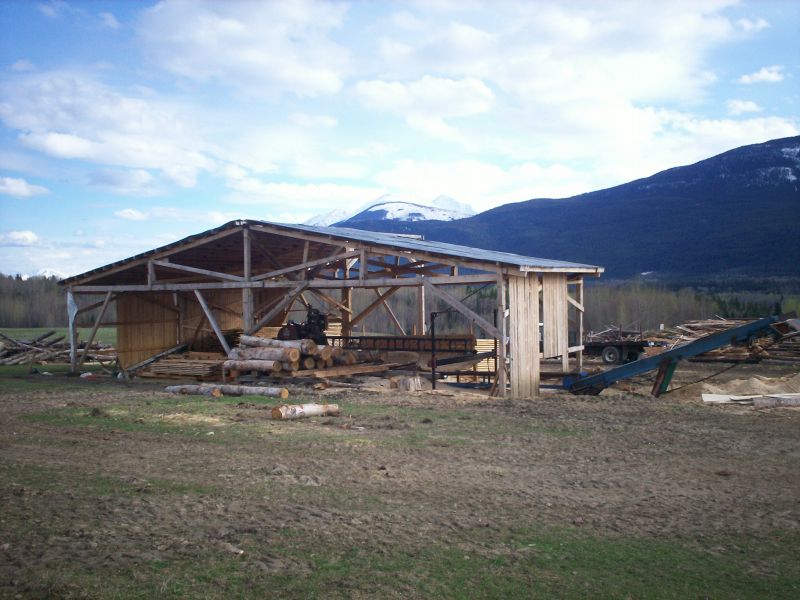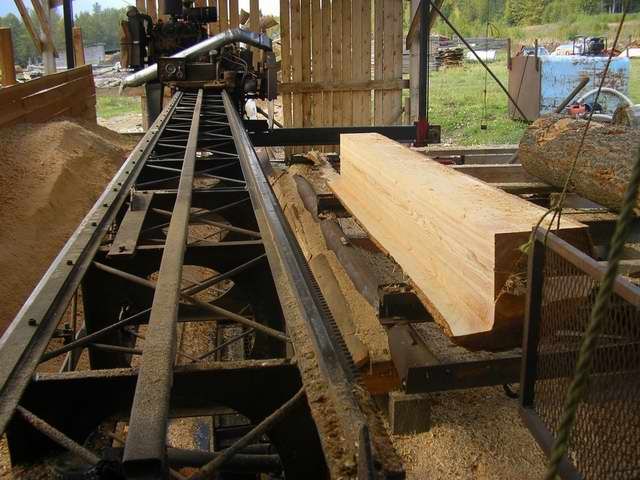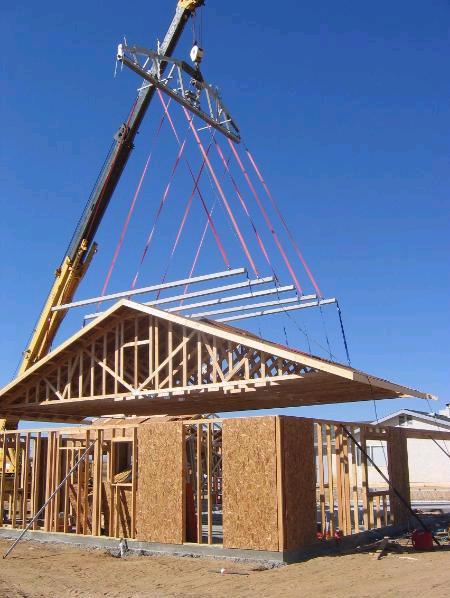Question
I'm a qualified welder/machinist who recently purchased wooded acreage to develop. After much shopping, I've decided to build my own swing mill. I'm sort of in the no-man's-land middle of the mill market... I don't need "portable" and the compromises that brings, nor do I want a full size permanent mill.
Another factor is that I already own an excellent power unit - an 85hp Cat MTL (skid steer on tracks) with a 40gpm hydraulic system. The small size of a hydraulic motor allows direct shaft drive (no angle gearbox) and easy 2 axis power saw control.
My question relates to the saw hub. Is there any manufacturer that sells blades and matching hubs? So far it appears that I will have to machine my own hub to match the manufacturer I choose to purchase blades from (currently Peterson, as they have thin kerf and planer blades for their machines).
Forum Responses
(Sawing and Drying Forum)
From contributor S:
You might be better off looking for a used swingmill, and just swapping out the gas motor for a hydraulic one. I know of an Amish guy that did this with a Wood-Mizer. The other thing about the swing mill types is that they are best suited for sawing building lumber like 2x6 and 2x8's. If you have high quality cherry or walnut, the swing blade mill is the wrong choice. If you are good at welding, another option would be to buy a circular mill and weld up a frame for it. Circular mills are pretty cheap around here right now. Check with Sawmill Exchange to see if there are any in your area.
Almost bought a used Peterson for sale just a few miles from here. Was able to give it the go-over quite good. Was impressed with its design, but the well done compromises to make it truly portable left me wanting for a more stable setup. Mine will be in place for a couple years and I'm looking for something rock solid. With my equipment and experience, the frame itself is rather trivial to construct, and I just can't justify spending 15K+ for something that I'll want to immediately start rebuilding.
Unless I'm missing something, your suggestion of looking for a used circular and using that as the base to start from won't work for a swing. To my knowledge, the typical non-swing mill uses a two piece hub which is not flush on one side. This is a must on a swing.

The details are this... I'm putting four new houses on the 10 acres. Am going with ICFs, (not stick frame) and will be using both the oak and clear fir for trim, flooring and beams. I've got a local kiln and moulding processor.
I know it's cheaper to sell the logs and buy the flooring at Home Depot, etc, but I'm just not into that this round - want to have the fun of cutting it, milling it and installing it. It doesn't pencil out, but I don't care. Sometimes you want to look at something and say "See that? ... I did it all."
"I suppose your point about the circular mill is that you would like to make a 10" horizontal."
Exactly.
I was also pointing out that these machines will produce far more material than you will need. Even your twenty home example would not take very long. Purchasing a used circular mill is a good idea for keeping the cost down - new they are big bucks Even a new swing blade is big bucks, and like you said, the frames aren't what you are looking for.
Since all I am missing is an arbor, flange and blade, we're not talking about a great deal of cost used or new. I certainly would consider purchasing those parts used if someone had exactly what worked for me, but so far I've found nothing of the sort.
I still suspect that I will end up machining my own hub/flange to mate up to Peterson blades. Peterson products seem to be readily available.
I have added a photo of my mill in action on an 18" log I was cutting for 12" wide barn boards. I do not turn my logs once on the mill deck unless I am cutting larger than 8x12 dimensions.
A word of caution with the 25" blades at a 3/16 kerf in Douglas fir - the blade will heat if you are the least bit dull. My saw doctor liked to show another guy's swing mill blades to me as an example of what not to do as I learned to cut. If you decide not to go with an insert tooth style blade, then be sure to buy a couple of spares so you can keep cutting when one is getting fixed or re-tipped. Before you build your mill I would search out a saw doctor, as they are full of great advice and you will need one to hammer the blade straight the first time you heat it up in a jamb, split log, bad cut or if you try to saw off your log dogs (the carbides made it halfway through the mild steel before I found reverse).
Buy a good sharpener and after spending a lot of money on three different models, trust me when I tell you Jockey grinders or Andrus (sold by Meadows Mills) are worth the money. Forget about anything but carbide teeth. Yes, they are expensive and you need a diamond stone to sharpen, but I get 2-3000 bf between sharpening. High carbon steel gets about 1500bf and the cheap teeth get about 500bf or the first bit of dirt, whichever comes first. In the summer I wash my fir logs and go even farther between sharpening, as the cork-like bark on the fir holds the grit and dust better than any other species I cut.
I am also a welder and considered building my own mill, but new steel and my labor were about equal to the price of the used mill I purchased. You can always sell it when you're done if you donít get addicted like the rest of us.

To the original questioner: I share the feelings of others that building your own mill might be counterproductive. Many of the people here have years of experience and have seen all kinds of equipment problems.
Having said that, I think building your own swingmill is a possibility, and is a worthwhile project. But be prepared for some fussing with details to get the bugs out and get the machine working the way you want it to.
Since you're cutting fir, you are likely west coast (I'm Los Gatos, CA myself). Can you recommend a good doctor at this end of the country?
Contributor S, I appreciate your comments. I'm sure you're right - I'd be better off buying a mill, and I almost did that just a few days ago. But in the end, I'm a builder who loves to build things.
Below is an example of one of the projects I've built in my shop - in my homebuilding business, we build the roof structures on the ground and crane them up. I save a ton on framing labor, and installing fascia, etc. on the ground pays safety dividends big time.
That frame you see is hooked to my 18 ton crane and if you look close, there are two gear motors in the frame that, via remote control, allow me to tilt and balance the structure in both X and Y. Designed and built from scratch (they don't sell them at Home Depot!). I enjoy these projects and am looking forward to the mill.

That's a nifty setup to put the roof trusses on with. I've put a few roofs on with individual trusses and know what a pain it is to get everything plumb and straight.